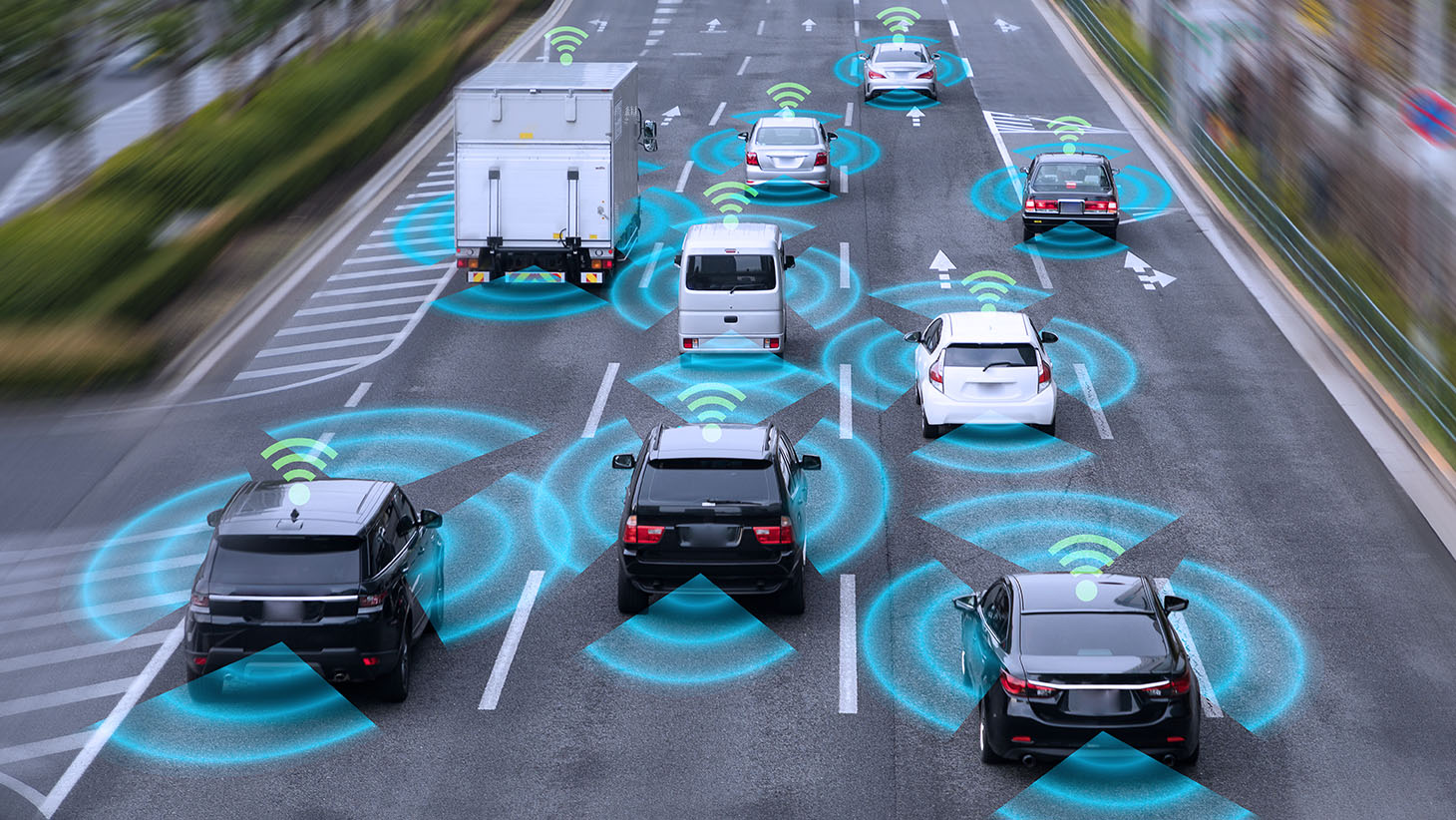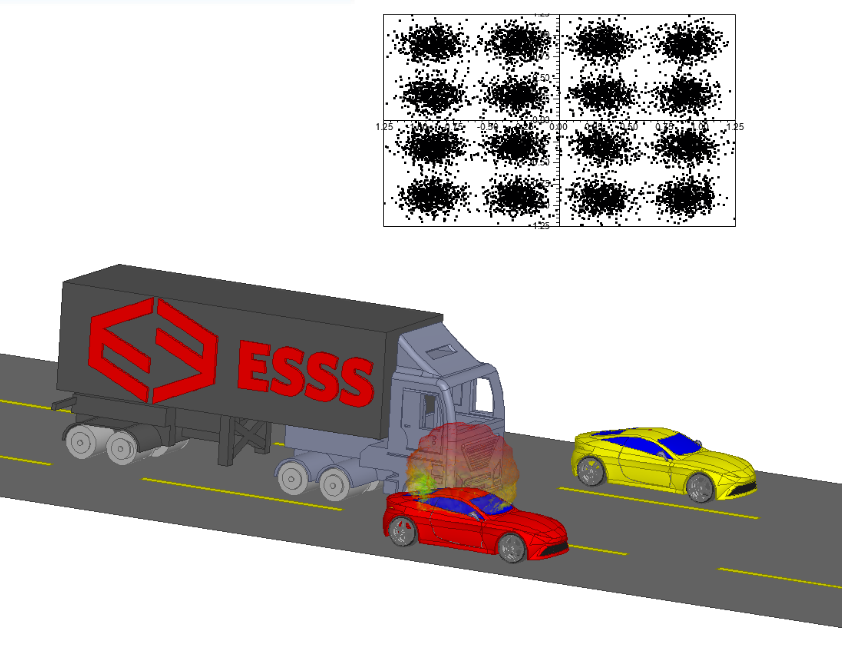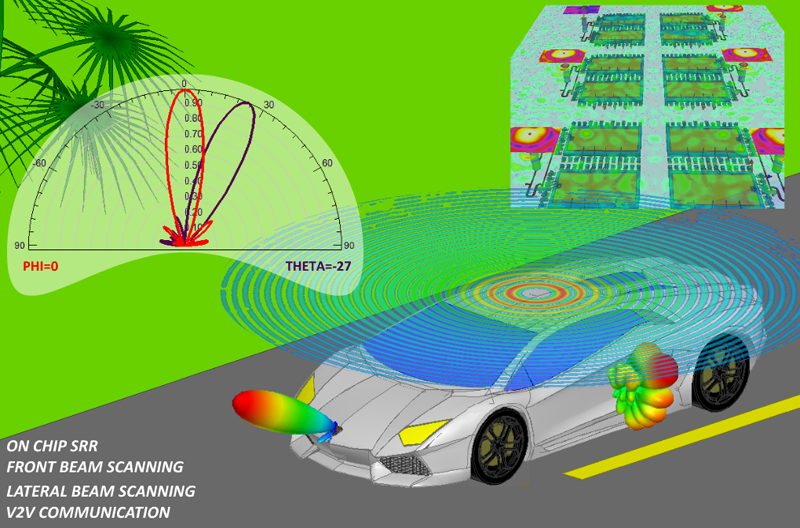
Simulation aids in the development of safer vehicles
In recent years, embedded systems have been gaining prominence in the global and national industry. This technology stands out because it is currently used to control processes ranging from a simple turning on and off lights to the management of drones or unmanned aircraft. During the 5th SAE Embedded Electronics and Engineering Show, held on June 18-19 in Volta Redonda (RJ), this and other technological trends applied to mobility were discussed, promoting the exchange of experiences and information among professionals and the debate for the automotive industry.

Simulation contributes to building more efficient urban mobility
Juliano Fujioka Mologni, ESSS’ high-frequency electromagnetic simulation expert, presented the study “Numerical Simulation of Automotive Radar Systems and V2V Technology“, in which he shows how the communication between two vehicles (V2V – Vehicle to vehicle communication) can avoid accidents and congestion and how numerical simulation can be used to build a more efficient urban mobility.
In an interview, Juliano explains in more detail the study presented at the event and talks about V2V technology and embedded systems.
You presented the study “Numerical Simulation of Automotive Radar Systems and V2V Technology” during the 5th SAE BRAZIL Colloquium of Embedded Electronics and Engineering Exhibition. In your opinion, what is the importance of an event like this one that discusses embedded technology applied to automotive and mobility?
Juliano Fujioka Mologni – The event is of high relevance, being one of the only ones that addresses embedded electronics in vehicles, a theme that has been considered increasingly important by automakers and suppliers, given that the technological innovations depend increasingly more on electronic systems and especially on wireless communication. The professionals who attended the event were able to discuss the new technologies that are being developed and especially the feasibility, both commercially and technically, of these products for the domestic market.
The study you presented at the event addresses the issue of simulation applied to an area that is currently gaining prominence in the national market, the V2V – Vehicle-to-Vehicle. Can you summarize the study presented and explain the relevance of this study for the area?
Juliano Fujioka Mologni – The presented study shows how it is possible to develop communication devices between vehicles and automotive radars using Ansys tools. With the current technology it is possible to simulate the product in all its development phases, and we can go beyond and simulate the operation of this product in a real environment (such as a radar detecting people on the road or the communication between two moving vehicles), which guarantees not only the virtual validation of the product, but also minimizes the possibility of recall or failure in the field. The two topics presented are classified as ADAS (Advanced Drive Assistance Systems) with the ultimate goal of increasing the safety of drivers, passengers, and pedestrians.
How can computer simulation, especially HFSS, contribute to the studies and development of embedded systems in the automotive area?
Juliano Fujioka Mologni – Computational simulation is an essential tool for the development of embedded systems, since it allows the engineer to analyze the performance of his product without the need for a physical prototype, which reduces development time (time to market), cost, and also provides internal details of the product (such as electromagnetic field visualization) that is extremely difficult to obtain experimentally. In addition, Ansys HFSS in combination with Ansys fermions such as Simplorer, Scade Suite, Fluent, and Mechanical allows for a systemic analysis of the integration of embedded systems in the vehicle as well as dynamic situations encountered in everyday life, minimizing the likelihood of the dreaded recall.

Systems classified as ADAS are developed to automate and improve vehicle systems focusing on the safety of drivers, passengers, and pedestrians
Another tool that can aid embedded software development is the ANSYS Scade Suite. Could you explain a bit more about this technology, how it works, and what areas of industry can benefit from it?
Juliano Fujioka Mologni – Ansys Scade Suite is a tool for developing high-security embedded systems that demand extremely precise control. One of its main features is the generation of code for already certified embedded software. In the automotive market, the ISO 26262 standard rules the development, certification, validation, implementation, and integration of critical automotive subsystems such as Airbag and ABS. Using Ansys Scade Suite it is possible to generate all ISO 26262 certified on-board software.
ESSS and the Woca Laboratory (Inatel) are developing research using ADAS technology that aims to revolutionize the automotive industry. Can you explain a little more about the study and how it can revolutionize the automotive industry?
Juliano Fujioka Mologni – Systems classified as ADAS are developed to automate / adapt / improve vehicle systems focusing on increasing the safety of drivers, passengers, and pedestrians. In addition to automotive radar and vehicle-to-vehicle communication (V2V), systems such as intelligent headlights that turn on automatically, automatic braking, and accident and traffic advisories are part of ADAS. The goal of ADAS is to zero the number of traffic deaths. Over the years several pieces of equipment have been developed to reduce the number of fatalities, chronologically we can mention seat belts, ABS, Airbags, and electronic stability control. ADAS is the next generation of safety devices that have highly integrated sensors and will significantly increase safety for all.
In your opinion, how important is it to be able to count on simulation systems in the different engineering areas for the development of projects and improvement of high frequency equipment (Antennas, Microwaves, EMI/EMC, Signal integrity and multiphysics coupling)?
Juliano Fujioka Mologni – The products are increasingly complex, with more embedded technology (an example is the trend known as the Internet of Things), and the market is increasingly competitive. Computer simulation is an essential tool that allows the company to optimize its products, reduce cost and development time. However, it is the key tool responsible for disruptive innovations, creating revolutionary new products (examples: iPhone that introduced the Smartphone market, the evolution of the CD Player to the iPod, etc.) since all ideas can be simulated in a very easy and limitless way.

